Pro Bike Check

The 160mm travel Strive uses the ‘Shape Shifter’ system to adapt the frame geometry, vary the amount of travel and tweak the leverage ratio as you ride. In XC mode it has 130mm of travel with a firmer initial spring rate. Switch to DH mode and you get slacker angles and a lower bottom bracket for descending. With Fabien’s design influence, the Strive features a rather long front end and the bikes come stock with a stubby 40 or 50mm stem. Fabien is 180cm tall and chooses to run a large frame (468cm reach) with a 50mm stem.
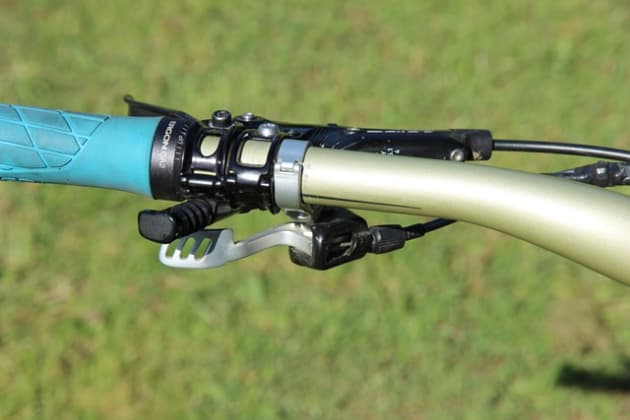
Fab runs his dropper post remote under the bar on the left with a small piece of adhesive backed sandpaper on the button for better grip. The stock Shape Shifter travel adjust lever has been swapped for a modified Fox dropper post remote, as it tucks in neatly with the Reverb remote.
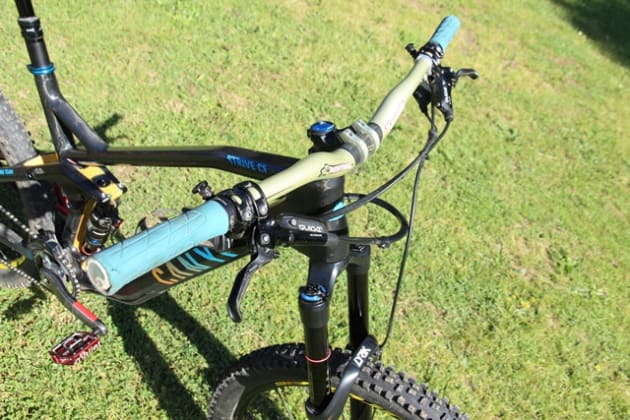
A 50mm long stem is paired with a 780mm wide Renthal Fat bar—the gold colouring makes it look like the alloy version but it's actually a special pro-issue carbon bar. The grips are a prototype soft compound version of the Ergon GE1. While most Strive models come equipped with a RockShox Pike, the big Frenchman opts for a slightly beefier Lyric fork.


In stock form the Strive comes with a piggyback equipped RockShox Monarch Plus but Fab has swapped it out for an inline style Monarch XX. He’s done this to make use of the remote lockout feature, which isn’t an option on the ‘Plus’ shock. Having ridden the Strive, I suspect that most trail riders won’t want or need the lockout but Fab is clearly looking to gain every last millisecond in EWS-style racing. His hydraulic rear shock remote is mounted under the bars on the right hand side.
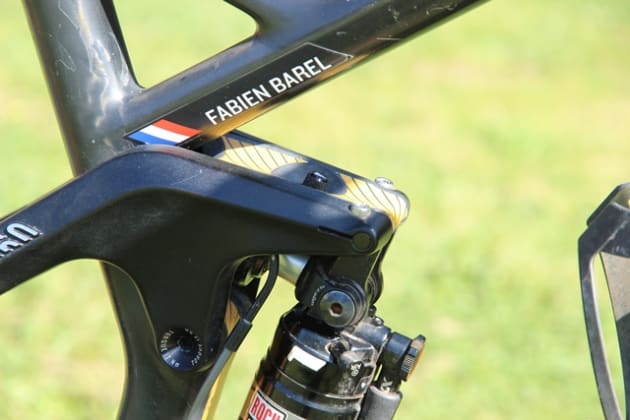
You’ll find the Shape Shifter mechanism tucked up inside the rocker link. It varies the location of the upper shock mount to change the travel and suspension feel. Shifting your weight back whilst pushing the remote lets the Shape Shifter mini-link drop into DH mode. Push the remote again and the small high pressure air chamber within the Shape Shifter unit pops the mini-link forward and into XC mode. The concept is simple enough but making the whole thing work on-the-fly required some serious development work from Canyon.

At 13.58kg ready to ride, Fabien’s Strive is respectable for an EWS race bike but no featherweight (it’s heavier than a stock Strive due to the component spec and Lyric fork). Fab himself is an 80kg powerhouse, so durability takes priority over weight.
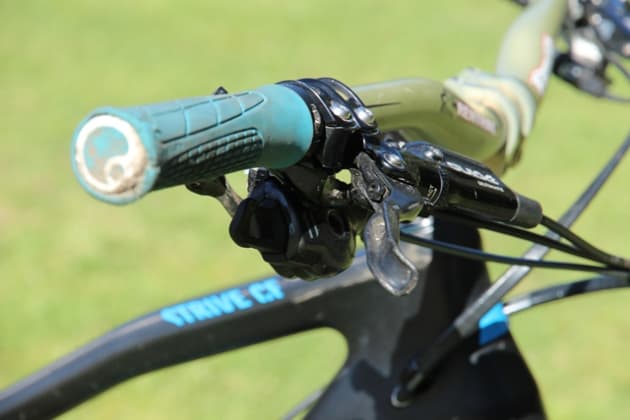
Fab runs his brake levers in a relatively flat position; that is more in line with the ground than you may be accustomed to. We’ve noticed that Jerome Clements – another French enduro racing legend – also opts for a similar setup. The aim is to position the heel of your hand lower and more behind the handlebar for better support and less stress on extended rough descents. Closer inspection revealed that his ergonomically shaped grips and levers weren’t evenly placed—he runs one lever higher than the other to compensate for an injury. Fabien also places one cleat further back than the other and runs a thick innersole in one shoe, again both compensating for body misalignment due to injury (he broke his femur in 2010 and now has one leg shorter than the other).
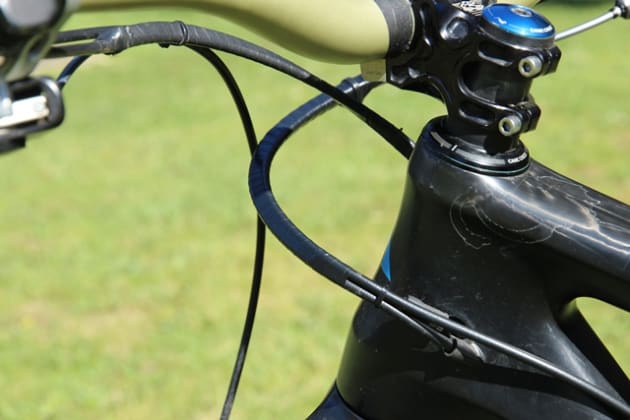
With so many remote levers filling the handlebars, Fabien has tidied the bird nest of cables by taping them together—the end result is surprisingly tidy.








